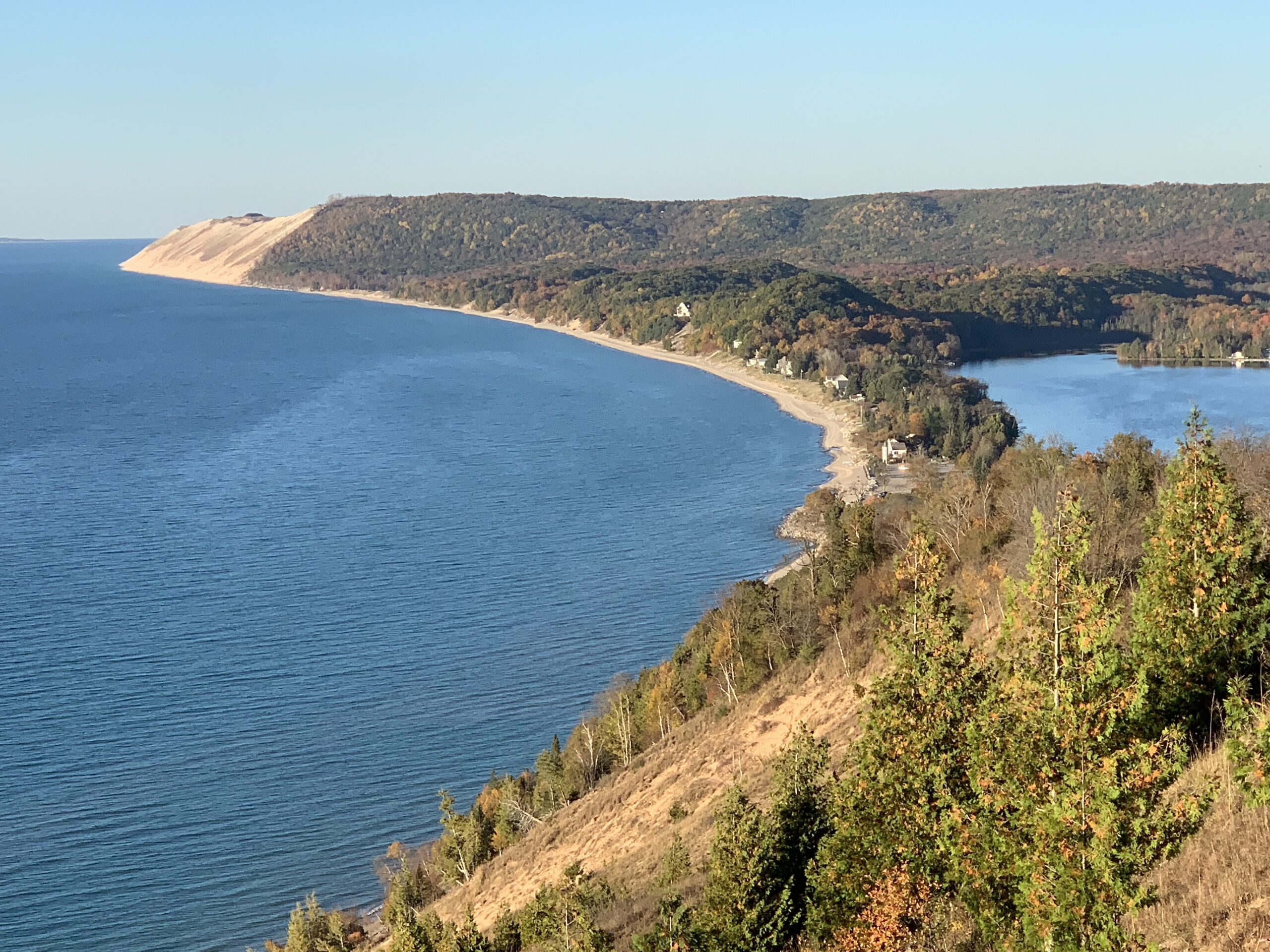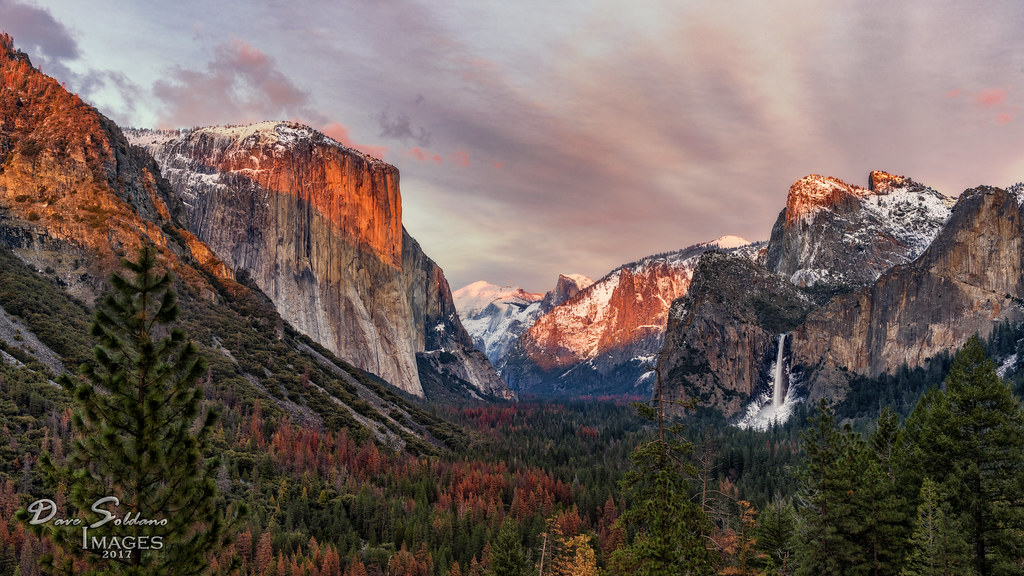
John Muir described the magnificent Yosemite Valley in dispatches in Century Magazine.
“The walls of the valley are made up of rocks, mountains in size, partly separated from each other by side cañons and gorges,†wrote John Muir of magnificent Yosemite Valley. “They are so sheer in front, and so compactly and harmoniously built together on a level floor, that the place, comprehensively seen, looks like some immense hall or temple lighted from above.â€
With this frontline account, published in the August 1890 edition of Century Magazine, the naturalist and author John Muir launched the media-led campaign that culminated three months later with the founding of Yosemite National Park. Muir’s detailed, lyrical dispatches, published by one of the most widely read and influential journals of the era, also set in place another consequential feature of American life: they were the first to tie original reporting to environmental advocacy.
The marriage of original journalism and public interest campaigning, duplicated in the decades since by other national and regional environmental groups – and deployed across evolving and expanding communications platforms — produced extraordinary returns in two realms essential to American environmentalism.
First, tying reporting to advocacy led to clear advances for human health, safe air and water, wildlands and species protections and, most recently, understanding the science and steps to solve climate change. The singular achievements of American environmentalism – wildland preservation, Earth Day, the foundational federal and state statutes, cleaner air and water, the national ethic of natural resource conservation and safeguards — would not have been possible without the original reporting disseminated by the news desks of the nation’s environmental organizations.
Second, journalism elevated the effectiveness, stature, and institutional development of organizations devoted to original reporting and publishing. The Sierra Club is a telling example. Great frontline journalism widely disseminated in Century Magazine were essential ingredients in Muir’s formula for establishing the Sierra Club in 1892, and elevating its prominence, raising money, recruiting staff, and achieving program successes.
Muir built the organization on a foundation of original reporting and keen commentary, much of it published in the Sierra Club Bulletin, which he launched in 1893. In effect, Muir and his small staff established what we would now call a news desk, the first in an environmental advocacy group.
Through the 20thcentury the Sierra Club used its powerful news gathering capacity to win campaigns to establish new national parks and refuges. The formula was not foolproof. Muir and the Sierra Club lost the campaign to halt development of the Hetch Hetchy Dam in 1913.
Still, Muir’s model for undertaking first-rate reporting, and disseminating it through Sierra Club’s own media, has proved durable and successful. The club’s Bulletin evolved into Sierra Magazine, a nationally distributed quarterly print and online publication with 3 million subscribers. It features original investigative and long-form articles viewed as credible by mainstream news groups, thus attracting earned media, winning national reporting awards, and influencing legislation around conflicts over land, toxic chemicals, energy, and wildlife.
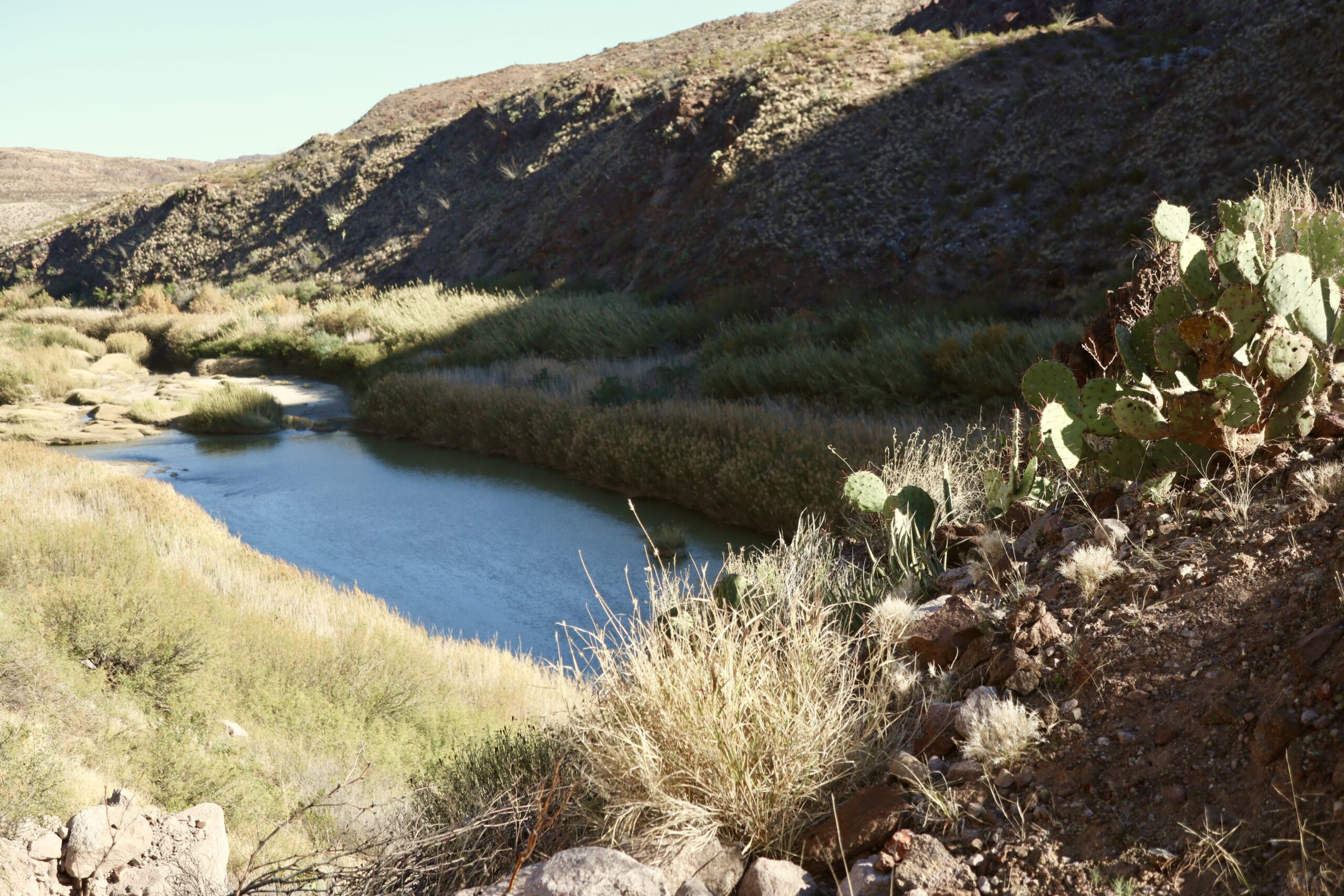
Contemporary broadcast, video, digital, and social media platforms of this century enable the Sierra Club to expand its audience and further elevate its work. The Club’s news operation manages sierraclub.org, Sierra Magazine, social media platforms, books, documentaries, a YouTube channel, and television broadcasts. Mainstream and non-profit news organizations trust the Club’s data points and perspective, follow its lead, and occasionally form collaborations on major projects. Millions of readers and viewers pay attention to the club’s various dissemination platforms.
A last note on the Sierra Club. Their formula works. One of the striking achievements of Sierra Club’s news desk was working with Ansel Adams in the 1960s to publish magnificent books full of superb photography to convince the public and the Interior Department not to build a new dam in the Grand Canyon. Another is the current Beyond Coal campaign to close coal-fired power plants in the U.S., which the Club’s news desk thoroughly reported and elevated to national prominence. Beyond Coal is the most successful project in Sierra Club’s history.
More Notable News Desks
While the Sierra Club was the first to understand the influence and reach of original journalism in advocacy, other environmental organizations developed capable news desks and dissemination strategies to help achieve their missions. A sampling:
National Geographic Society, formed to promote adventure and scientific expeditions, began publishing its signature magazine in 1888. The Society’s reporting and magazine publishing expanded to include books. In the late 20thand early 21stcenturies the Society added documentaries and other broadcast assets and evolved into a large and active multi-media production group with its own cable television channel. The Society’s media properties were sold to Fox in 2015. In 2019, Fox sold its National Geographic media properties to Walt Disney Company.
National Audubon Society began publishing Audubon, its monthly magazine, in 1899. Now a quarterly national publication, Audubon features investigative and long-form feature articles devoted to the Society’s interest in bird and habitat protection. The Society established a documentary film division that produced popular feature-length films through much of the 1980s and 1990s that were broadcast on network television. The Society now manages an active daily news desk, featured on its Web site, to report on federal and state policy, and natural resource trends central to its mission of protecting wild lands and birds. The organization’s successes reflect Audubon Society’s allegiance to reporting and dissemination across its platforms: preventing drilling inthe Arctic National Wildlife Refuge and other habitats. Recovering the imperiled California Condor and Brown Pelican. Developing and implementing innovative ideas that preserve millions of acres of wild habitat while encouraging renewal energy projects.
The Wilderness Societywas founded in 1935 by a group of eminent conservationists, among them Aldo Leopold, author of The Sand County Almanac, a classic of American conservation ethics and science. The Society’s greatest achievement is the 1964 Wilderness Act, written by Robert Zahnhiser, the editor of The Living Wilderness, the group’s magazine. Zahnhiser also was a columnist for Nature Magazine, a globally prominent monthly science journal. The authority of Zahnhiser’s reporting, and his mastery of the editorial voice of The Living Wilderness, was essential to elevate the idea in Congress and the Johnson Administration of permanently protecting what he called “untrammeled†wildlands.
Natural Resources Defense Council, founded in New York in 1970, launched The Amicus Journal, its quarterly magazine, in 1979. Serving as the focus of the NRDC’s media center, the Journal was edited by Peter Borelli, a former Time Magazine correspondent. The Journal featured investigative journalism and trenchant analysis of the federal government’s capacity to execute and enforce the new foundational environmental statutes of the era — air and water quality, hazardous wastes, toxic chemicals, ozone, nuclear energy and atomic weapons manufacturing.
In 1984 The Amicus Journal won the George Polk Award, a distinguished honor in American journalism. The magazine uncovered one of the most consequential scientific frauds in history, involving chemical product safety testing results that were faked by a laboratory near Chicago. The articles and the public response prompted manufacturers to withdraw over 200 pesticides from the market and led to reforms in the EPA’s pesticide review and oversight program.
In years since, NRDC made significant changes to its journalism and news desk operation. The Amicus Journalwas renamed OnEarth, and became the masthead for a news desk that published a quarterly print and online magazine, a daily online report on environmental news, and other news-related assets linked to NRDC projects and interests — charts, motion graphics, news shorts, brief videos.
In the 21stcentury, NRDC added a series of books authored by staff, among them Bob Deans, former president of the White House Correspondents Association and communications director in the NRDC Washington office. More recently NRDC stopped print publication of OnEarth and replaced the active daily online news report with regular postings of longer-form features in the “Stories†section of its Web site. NRDC also added video productions on its NRDC flix YouTube channel.
Greenpeace recognized from the moment it was founded in 1971, to oppose nuclear testing in Alaska, that reporting its direct-action campaigns on its own organizational print, photographic, and film platforms was the formula for galvanizing public attention and mainstream media interest. Dispatching fearless campaigners on inflatable speedboats to impede whaling ships, halt ocean nuclear testing, and bar dumping radioactive wastes in the sea made for great stories, pictures, and films. The payoff was much greater public awareness of the threats to oceans and marine creatures, and a long list of public interest victories including international bans on ocean nuclear testing and commercial whaling. Greenpeace now operates all over the world with 600 staff members and a $110 million annual budget.
In the half-century that it’s operated as an international non-profit activist organization Greenpeace also distinguished itself as a journalism and dissemination innovator. One of its most inventive reporting projects was an investigative unit launched in the early 2000s and managed by journalist Kert Davies. Davies was principally interested in how climate deniers organized and developed policy. The denial movement’s communication infrastructure. And its funders.
Davies and his team led the way in uncovering Exxon’s corporate support and financial investment in the denial community. They disseminated their work on Exxonsecrets.org, a Greenpeace-sponsored Web site. The team’s work formed the foundation of breakthrough reporting in 2015 by Inside Climate News and the Los Angeles Timeson how Exxon hid its own credible science on the hazards of climate change.
Later, Davies turned his attention to the millions of dollars the Koch Brothers spent on climate deniers and their campaign to dismiss warming as a scientific hoax. The data points and details in the March 2010 Greenpeace report, “Koch Industries: Secretly Funding the Climate Denial Machine,†were essential to the blockbuster article on the Koch Brothers’ insidious climate denial campaign that Jane Mayer published in The New Yorker five months later.
Other Groups Rely on News Desks
Smaller environmental organizations also devote considerable energy to developing and managing active news desks.
Worldwatch Institute, founded in Washington in 1974, was one of the first environmental organizations dedicated solely to journalism and publishing. Lester R. Brown, an agricultural economist and author, led Worldwatch until 1990. In those 16 years, the group focused on a comprehensive analysis of global environmental issues. They published thoroughly documented first-of-a-kind articles, reports, Worldwatch magazine, and books on environmental topics that, at the time, few other research groups or newsrooms covered: human migration patterns, soil erosion trends, desertification.Â
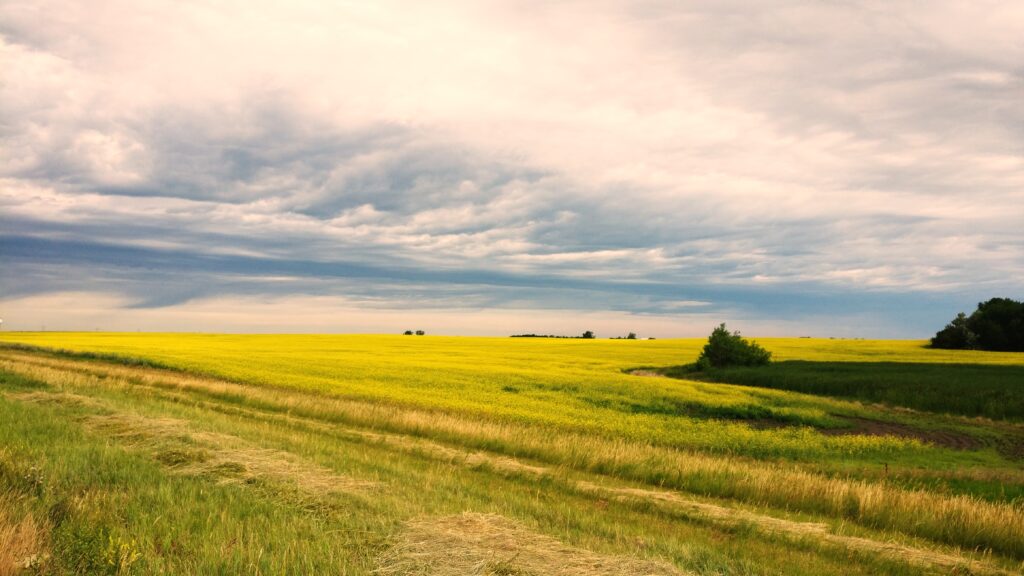
told by environmental journalists. Here rape seed field in Minnesota. (Photo/Keith Schneider)
In 1984, Worldwatch introduced State of the World, an annual report card on global environmental trends and conditions. Ted Turner, founder of CNN, bought hundreds of copies and distributed them to his producers and editors.
Supporters praised Worldwatch for the quality of its research, the range of topics it studied, and Brown’s ability to attract media attention. Worldwatch publications led national TV news broadcasts, were regularly featured on newspaper front-pages and news magazine covers, and prompted film documentaries. The group earned half of its annual revenue from the sale of its publications and Brown’s speaking fees.
In 1995, Worldwatch published Who Will Feed China? Wake-up Call for a Small Planet, which identified three ominous trends converging on China’s agricultural sector: growing population, scarce freshwater reserves, and an expanding urban development that was shrinking the amount of available cropland. Brown, the book’s author, predicted plummeting domestic grain harvests in China leading to massive grain imports resulting in soaring global food prices.
The book prodded Chinese officials to action. From 1994 to 2011, China’s grain production actually increased by an average of 7.4 million metric tons a year. Chinese officials credited Brown for alerting them to an impending crisis and prompting Beijing to redouble its efforts to improve technology and farm productivity. Rather than backsliding into famine, China drew closer to self-sufficiency in food production in the 21st century.
Michigan Land Use Institute, founded near Traverse City in 1995 and renamed the Groundwork Center in 2015, is an advocacy and policy group studying planning and promoting more responsible development patterns for the Great Lakes region. The Institute’s center during its first two decades was an activist news desk. It hired journalists and trained them to be advocates. Their work was noted statewide and nationally for the quality of its research, writing, presentation, and effectiveness.
The Institute closely tied its programs to its journalism and a 10-person news desk, one of the largest assemblages of environmental journalists and editors in the country. Their articles, photographs, graphics and other editorial products were published in the quarterly print Great Lakes Bulletin, online on the Great Lakes Bulletin news service, and in videos and other multi-media assets. The Institute’s Web site reached 200,000 monthly visitors who downloaded over 58,000 pages a month. Institute editors also developed state and national news services to disseminate original reporting and commentary. The organization’s writers regularly contributed to Detroit Free Press, Detroit News, The New York Times, Gristmagazine.com, National Public Radio,Detroit Metro Times, and numerous other publications.
The influence of MLUI journalism and dissemination was outstanding. The Institute’s investigation of rapacious oil and gas development practices in Michigan, for instance, led to new state safety measures to protect forests and streams, and a Congressional statute that permanently banned drilling beneath the Great Lakes. Other reporting and commentary, in collaboration with land use groups and publications nationwide, helped to establish walkable, ecological, affordable, sustainable Smart Growth as the design standard for cities nationwide.
Fresh Energy, a 29-year-old Minneapolis-based clean energy advocacy group, launched its Energy News Network in 2010 to serve as a respected producer of original news about renewable energy trends, practices, and markets. Energy News Network operates an active daily news desk overseen by several editors and staffed by 18 ENN full-time and a collective of 40 freelance journalists operating in every region of the country. The ENN report is solid, exclusive, path-breaking and influential. It publishes more than 70 original articles a month and has been a powerful voice in advocating for clean energy adaptation and legislation across the country. ENNalso has helped Fresh Energy develop into a $4 million-a-year organization, one of the largest regional environmental groups in America.Â
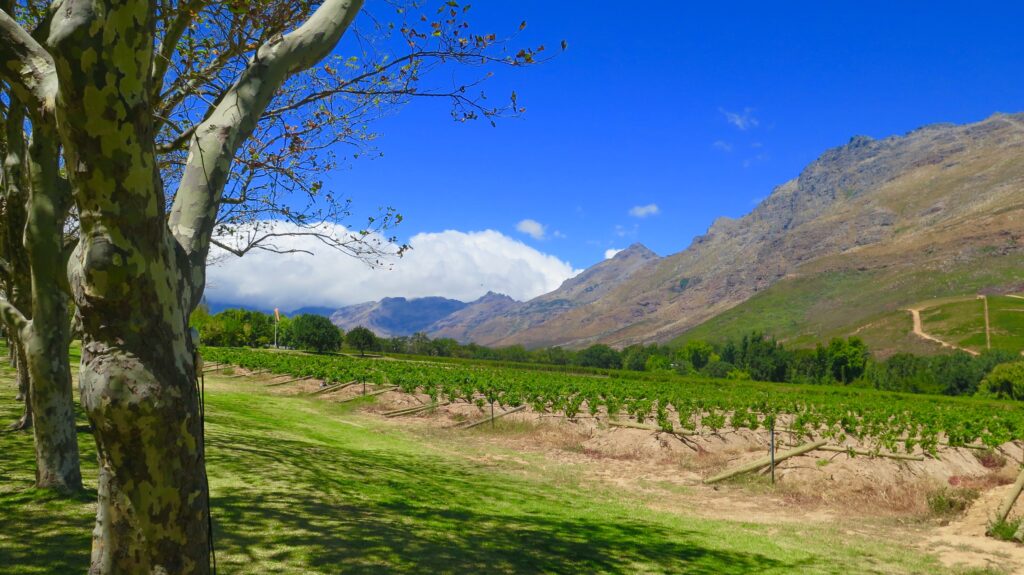
Here a South African vineyard north of Cape Town. (Photo/Keith Schneider)
Summing Up
A last thought. In the 131 years since John Muir’s reporting and writing made the case to establish Yosemite Valley and the surrounding wild domain as the nation’s third national park, one element of environmental organization news desks has remained essentially unchanged: hiring professional journalists and turning them loose to do great work. The history of American environmentalism is, in many ways, a narrative of exceptional investigation, fact gathering, and story-telling.
The second crucial element of environmental organization news desks –their dissemination strategies — is evolving quickly.
Print media has weakened substantially. So many great organizational publications are gone. (I know. I wrote for many of them at the start of my career.) Friends of the Earth launched its peerless magazine, Not Man Apart, in 1970. It closed the magazine in 1990. The Oceanic Society started publishing its monthly Oceans magazine in 1969, in response to the Santa Barbara oil spill. Its last edition published in 1988. Wilderness, the Society’s magazine, was replaced in 2015 by a quarterly newsletter.
Contemporary dissemination strategies now encompasses the Web, video, social media, podcasts, in-house broadcast studios, motion graphics, on-line presentations and convenings. Environmental organizations, just like commercial news desks, have developed these platforms that make the work of their journalists, photographers, videographers and graphic artists accessible to much larger audiences.
The environmental organizations that publish and broadcast great reporting on engaging platforms are achieving measurable policy successes. They also recruit excellent staffs, attract more members and funders, and build their institution’s reach and stature. John Muir would approve.
This essay was commissioned by the Environmental Defense Fund, one of the country’s largest non-profit environmental advocacy groups. EDF, founded in 1967 to apply its science and legal capacity to cancel use of DDT, has never operated an independent news desk.
— Keith Schneider

She closed hard rock mines that violated pollution controls. (Photo/Keith Schneider)
